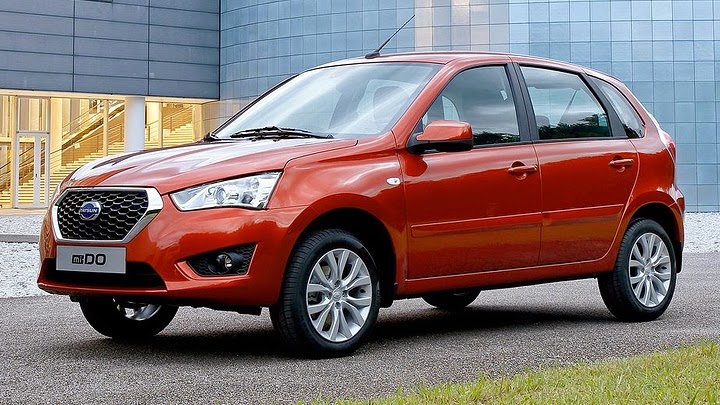
Datsun’s models can already be divided in two big groups. Go and Go+ were developed entirely by Nissan, using March’s project as the starting point. This is why they are very alike in some aspects, like the overall styling, but at the same time manage to be very different. These two are entry-level models, intended to deliver enough room for the average families at the lowest possible cost. On the other hand, the third and fourth cars follow a slightly different path, starting by their names. on-DO and mi-DO were created with Lada, which is another partner of the Renault-Nissan Alliance. But these are merely badge-engineered variations, which will be produced by Lada and even sold mostly in Russia, just as well as the original ones.
Therefore, if on-DO was based on Lada Granta, this time’s déjà vu can be solved by searching pictures of Kalina. The DO cars will honor Datsun’s value-seeking roots by sharing as many parts as possible with their respective Lada counterparts, which means the biggest differentiation can be found at some design parts. mi-DO has a front fascia of its own, with smaller headlights, more angular air intakes and a wider contour for the upper grille, so as to look sportier than the sedan. It does not look bad, but the problem is that Datsun stopped there. The result is an angular front fascia contrasting with the Russian shapes everywhere else, which are smoother and rounded. This kind of dissonance in small cars started to be avoided already in the past decade.










The cabin, in turn, looks only different, rather than better or worse. Datsun’s straight shapes appear mostly at the dashboard, and surrounded by single-tone coating and scarce chrome inserts, just like any other similar vehicle. The biggest improvement could be the central console, which integrates the infotainment central’s touchscreen in a better way then what is seen in Kalina. Depending on the trim level, mi-DO’s standard equipment list will have ABS brakes, climate control, front and side airbags, GPS, heated seats and rearview mirrors, power steering and the aforementioned central. The family-friendly intention is reinforced by the external dimensions: 3.95-m length, 1.70-m width, 1.5-m height and 2.46-m wheelbase are expected to seat five without problems.
Another way to remember this is an urban car is opening its hood: despite the slightly more aggressive external design, which even includes chrome treatment for the tail lights, the only engine option is a four-cylinder 1.6L, which drags the hatchback around with 87 hp of power – try to imagine it on a summer day, carrying five people and their baggage over an uphill road with the A/C turned on. If this was enough argument for you to give up the four-speed automatic transmission, mi-DO offers a five-speed manual as standard. Besides, the warranty lasts three years or 100,000 km. Datsun’s latest vehicle was officially released during this year’s Moscow Auto Show, and is expected to go on sale shortly after.